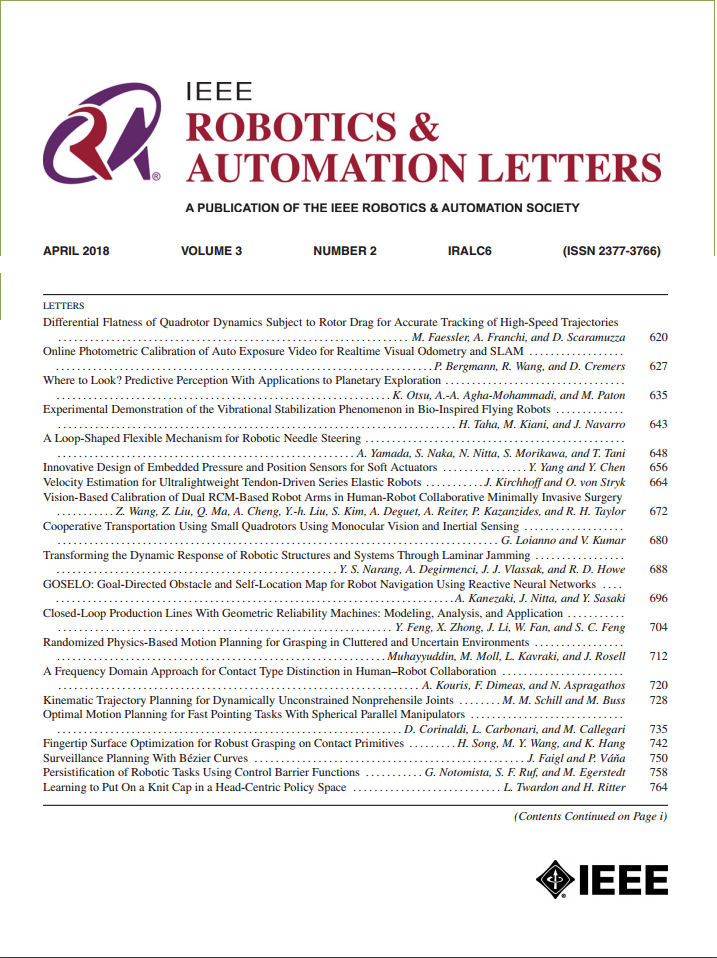CTS-PIBT:一种高效的多智能体协同任务排序和寻径方法
IF 5.3
2区 计算机科学
Q2 ROBOTICS
引用次数: 0
摘要
协作任务排序和多智能体寻路(CTS-MAPF)问题涉及在确定中间任务顺序的同时为多个智能体规划无冲突路径。由于其组合复杂性,这个问题尤其具有挑战性,因为它结合了任务排序和寻路。这封信介绍了CTS-PIBT,一种新颖有效的算法,旨在解决CTS-MAPF问题。CTS-PIBT采用分层框架,其中包含三个关键组件:任务排序、按照顺序查找解决方案以及使用扩展版本的PIBT进行低级搜索。该框架有效地利用了基于配置的方法的优点,能够在短时间内快速生成可行的解决方案。为了进一步提高性能,我们结合了随时细化机制和快速任务排序技术(称为2-opt贪心插入)来提高解的质量和求解效率。大量的模拟表明,CTS-PIBT在成功率和运行时间方面明显优于现有方法,特别是在大规模和复杂的场景中。此外,物理机器人实验验证了其在现实环境中的实际适用性。本文章由计算机程序翻译,如有差异,请以英文原文为准。
CTS-PIBT: An Efficient Method for Multi-Agent Collaborative Task Sequencing and Path Finding
The Collaborative Task Sequencing and Multi-Agent Path Finding (CTS-MAPF) problem involves planning collision-free paths for multiple agents while determining the sequence of intermediate tasks. This problem is particularly challenging due to its combinatorial complexity, as it combines both task sequencing and pathfinding. This letter introduces CTS-PIBT, a novel and efficient algorithm designed to address the CTS-MAPF problem. CTS-PIBT adopts a hierarchical framework with three key components: task sequencing, solution finding following the sequence, and a low-level search using an extended version of PIBT. This framework effectively leverages the advantages of the configuration-based approach, enabling the rapid generation of feasible solutions within a short period. To further enhance performance, we incorporate an anytime refinement mechanism and a quick task sequencing technique (called greedy insertion with 2-opt) to improve solution quality and solving efficiency. Extensive simulations demonstrate that CTS-PIBT significantly outperforms existing methods in success rate and runtime, particularly in large-scale and complex scenarios. Furthermore, physical robot experiments validate its practical applicability in real-world environments.
求助全文
通过发布文献求助,成功后即可免费获取论文全文。
去求助
来源期刊

IEEE Robotics and Automation Letters
Computer Science-Computer Science Applications
CiteScore
9.60
自引率
15.40%
发文量
1428
期刊介绍:
The scope of this journal is to publish peer-reviewed articles that provide a timely and concise account of innovative research ideas and application results, reporting significant theoretical findings and application case studies in areas of robotics and automation.
 求助内容:
求助内容: 应助结果提醒方式:
应助结果提醒方式:


